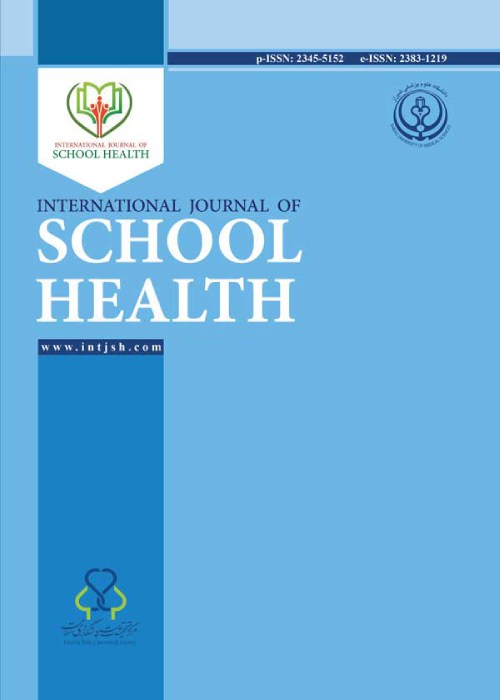Quantitative Evaluation of Skeletal Muscle Fat Content by Measuring Echo Intensity Using Ultrasonography in Preschool Children
Author(s):
Article Type:
Research/Original Article (دارای رتبه معتبر)
Abstract:
Background
Quantitative analysis of echo intensity (EI) is a reliable method for discriminating between normal and neuromuscular disease-affected muscles in children. However, the effects of increased skeletal muscle fat mass and total body fat mass in healthy preschool children are yet to be determined. The purpose of this study was to compare the EI of skeletal muscles and local fat accumulation in healthy preschool children by gender and body shape using ultrasonography.Methods
Three- to six-year-old children (149 boys and 124 girls) without any known neuromuscular disorder were included in this cross-sectional research, during the period of 2015 to 2018 in Miyazaki prefecture, Japan. Anthropometry, body composition, and EI of the biceps brachii muscle (BB) and quadriceps femoris (RF) muscle were measured by ultrasonography. Differences in anthropometric measurements and body composition divided by two types of criteria using age and sex-specific percentiles were analyzed using two-way ANOVA (P<0.05).Results
EI at the BB of overweight children (above 90th percentile) was 9.82±3.76 for boys and 10.87±3.69 for girls. EI at the BB of normal children (10th-90th percentile) was 6.02±2.62 for boys and 6.53±2.92 for girls. EI at the BB of thin children (below 10th percentile) was 5.61±2.17 for boys and 6.52±3.49 for girls. EI at the BB of overweight children is higher than normal and thin children (P<0.001). EI at the RF of overweight children (above 90th percentile) was 16.97±5.12 for boys and 18.84±3.41 for girls. EI at the RF of normal children (10th-90th percentile) was 15.32±4.55 for boys and 16.20±3.98 for girls. EI at the RF of thin children (below 10th percentile) was 14.94±3.90 for boys and 14.58±4.94 for girls. EI at the RF of overweight children is higher than normal and thin children (P=0.024). These results were also similar for the groups created using the 25th and 75th percentiles, with the above 75th percentile group showing clearly higher values of EI.Conclusions
Our results suggested that the accumulation of adipose tissue within skeletal muscle varies with the degree of obesity. It seems reasonable to conclude that an extreme increase in body fat might be linked to higher visceral and skeletal muscle fat (ectopic fat content).Keywords:
Language:
English
Published:
International Journal of School Health, Volume:10 Issue: 3, Summer 2023
Pages:
109 to 118
https://magiran.com/p2596573
دانلود و مطالعه متن این مقاله با یکی از روشهای زیر امکان پذیر است:
اشتراک شخصی
با عضویت و پرداخت آنلاین حق اشتراک یکساله به مبلغ 1,390,000ريال میتوانید 70 عنوان مطلب دانلود کنید!
اشتراک سازمانی
به کتابخانه دانشگاه یا محل کار خود پیشنهاد کنید تا اشتراک سازمانی این پایگاه را برای دسترسی نامحدود همه کاربران به متن مطالب تهیه نمایند!
توجه!
- حق عضویت دریافتی صرف حمایت از نشریات عضو و نگهداری، تکمیل و توسعه مگیران میشود.
- پرداخت حق اشتراک و دانلود مقالات اجازه بازنشر آن در سایر رسانههای چاپی و دیجیتال را به کاربر نمیدهد.
In order to view content subscription is required
Personal subscription
Subscribe magiran.com for 70 € euros via PayPal and download 70 articles during a year.
Organization subscription
Please contact us to subscribe your university or library for unlimited access!


